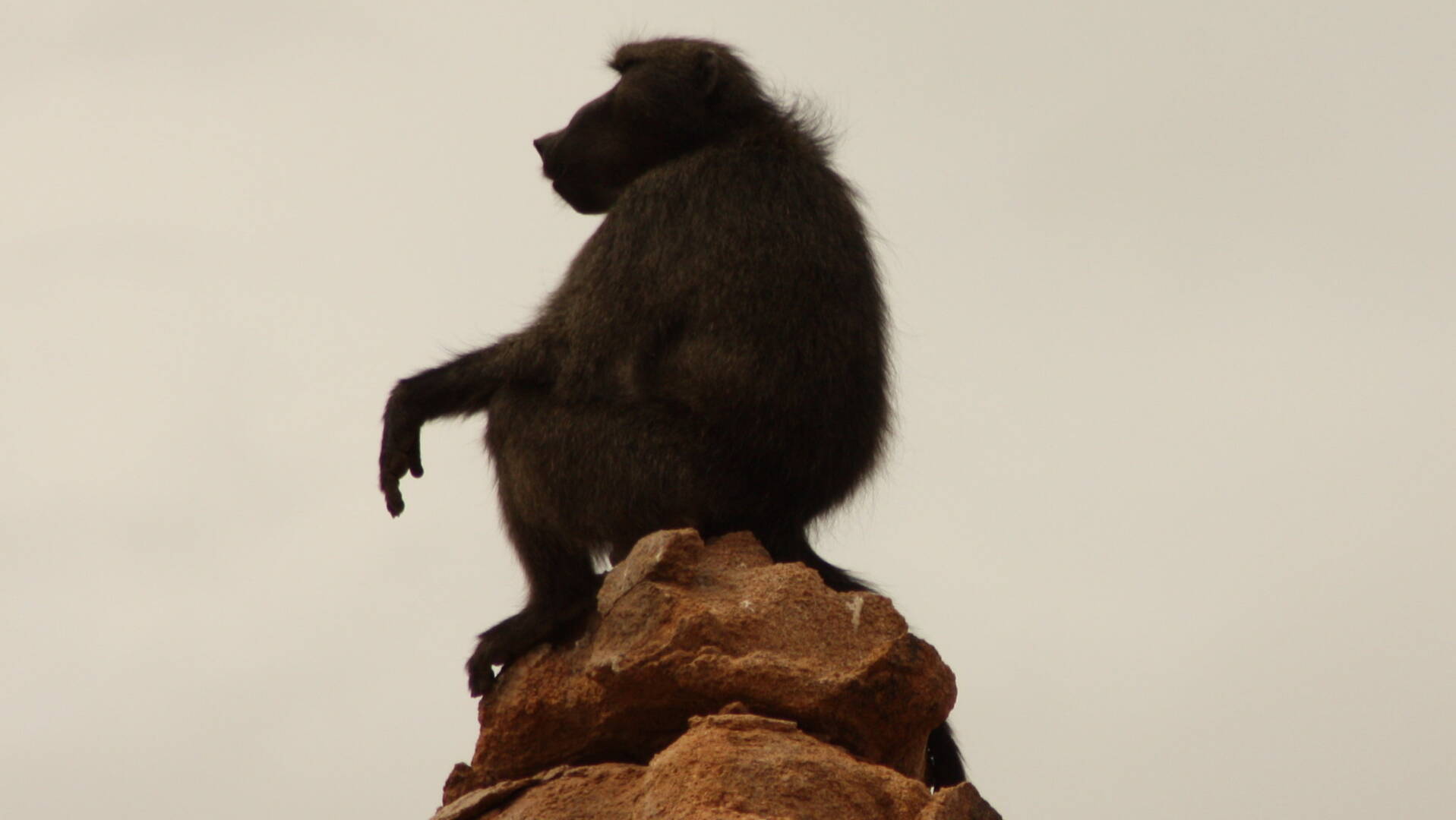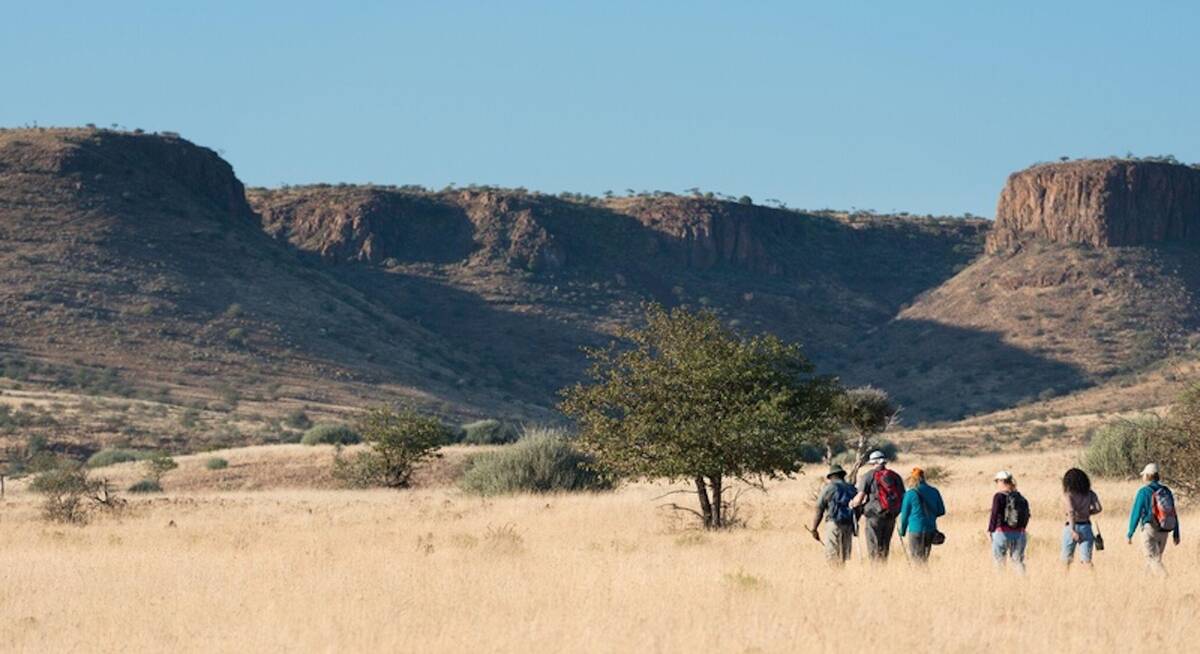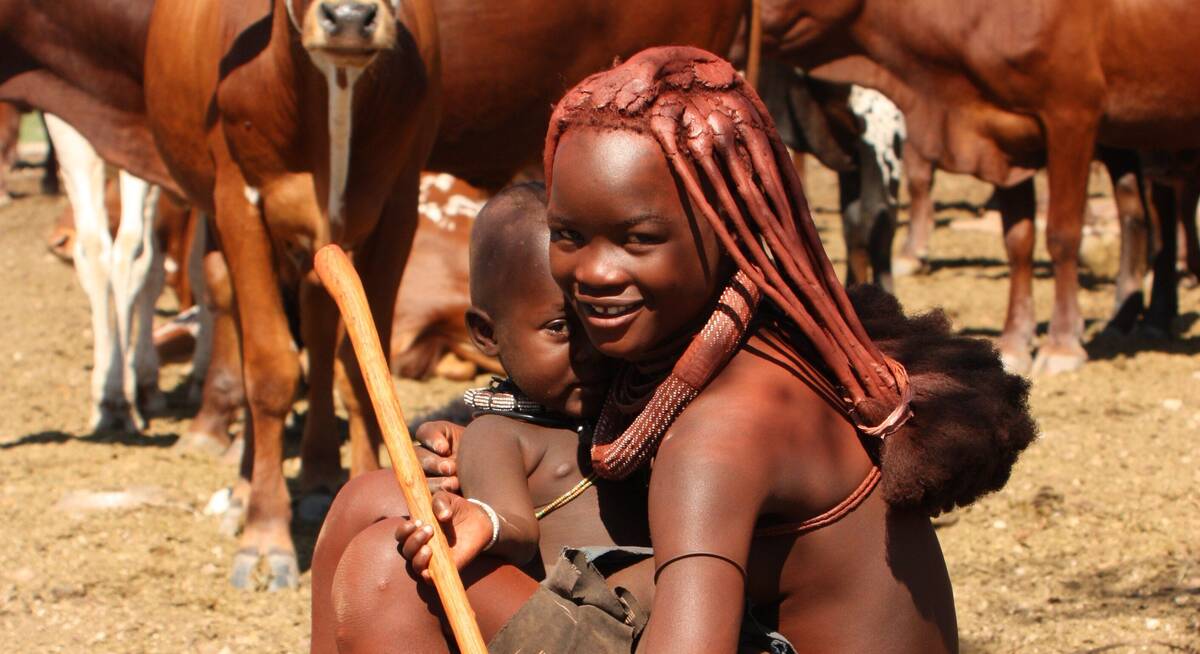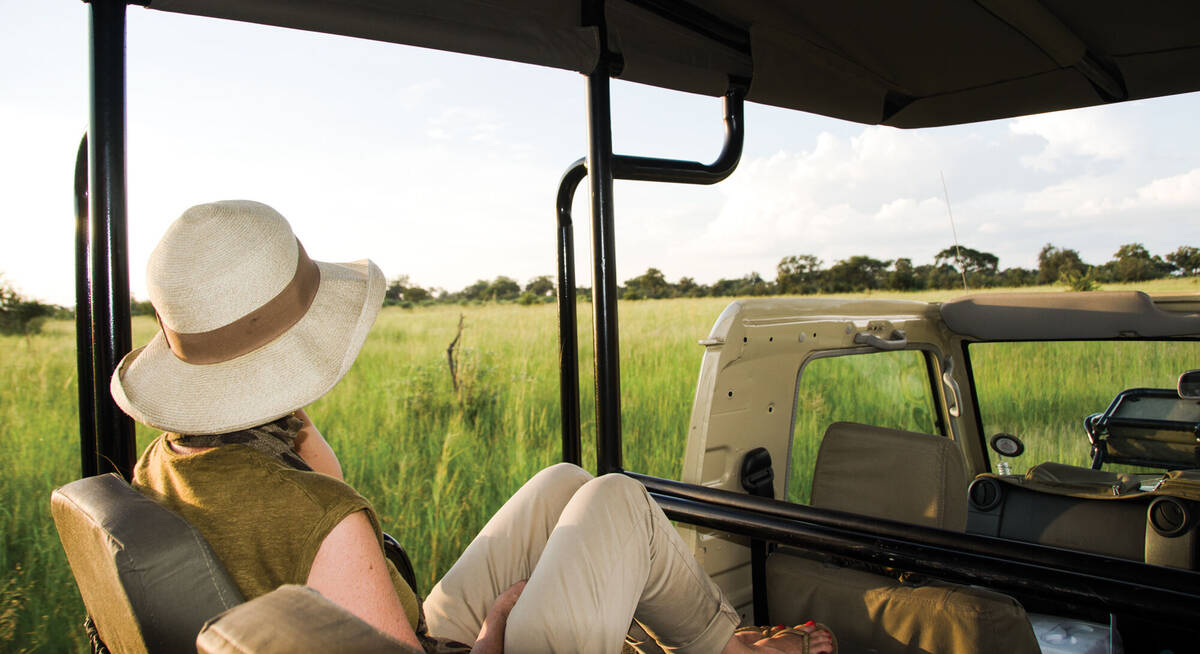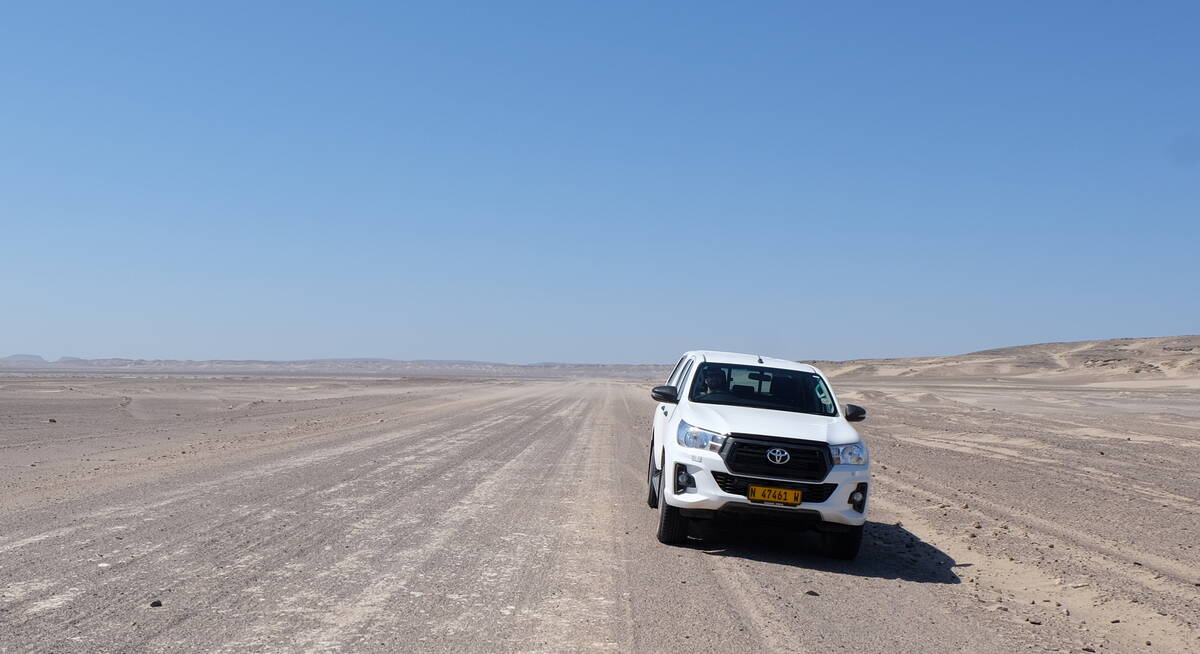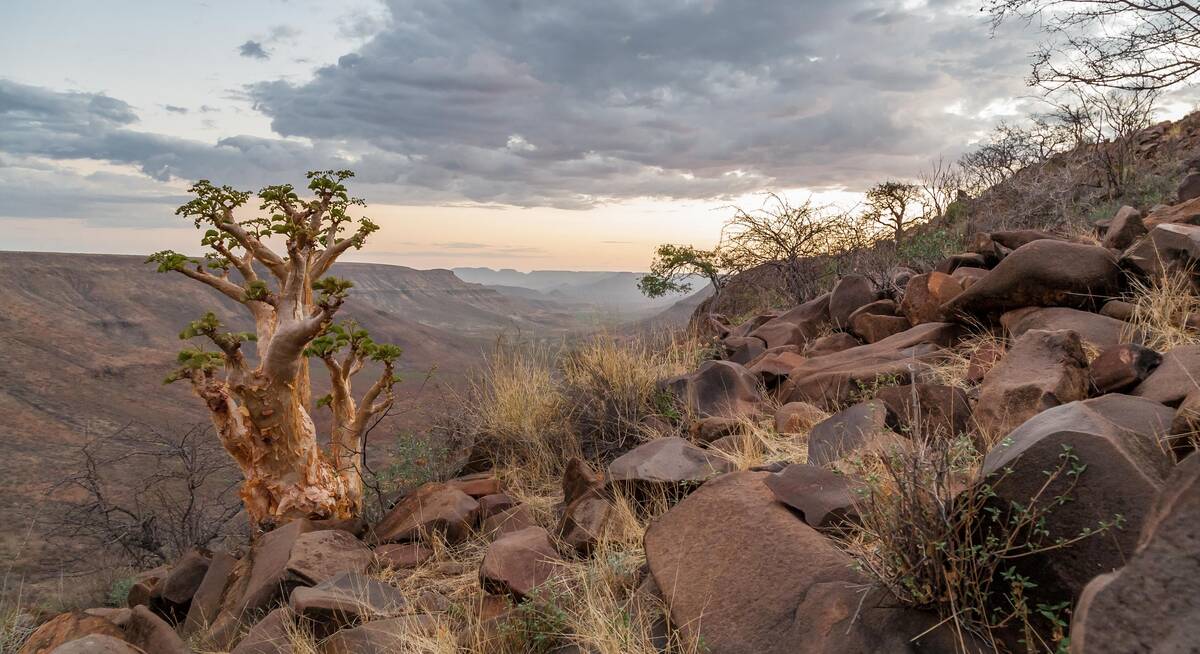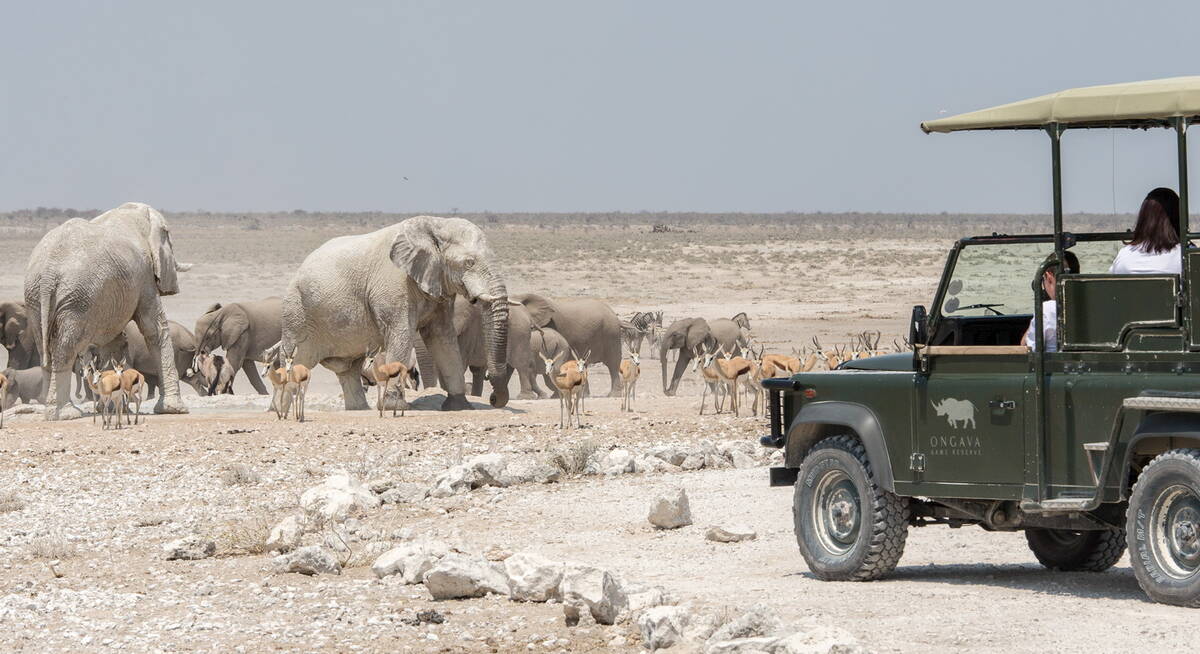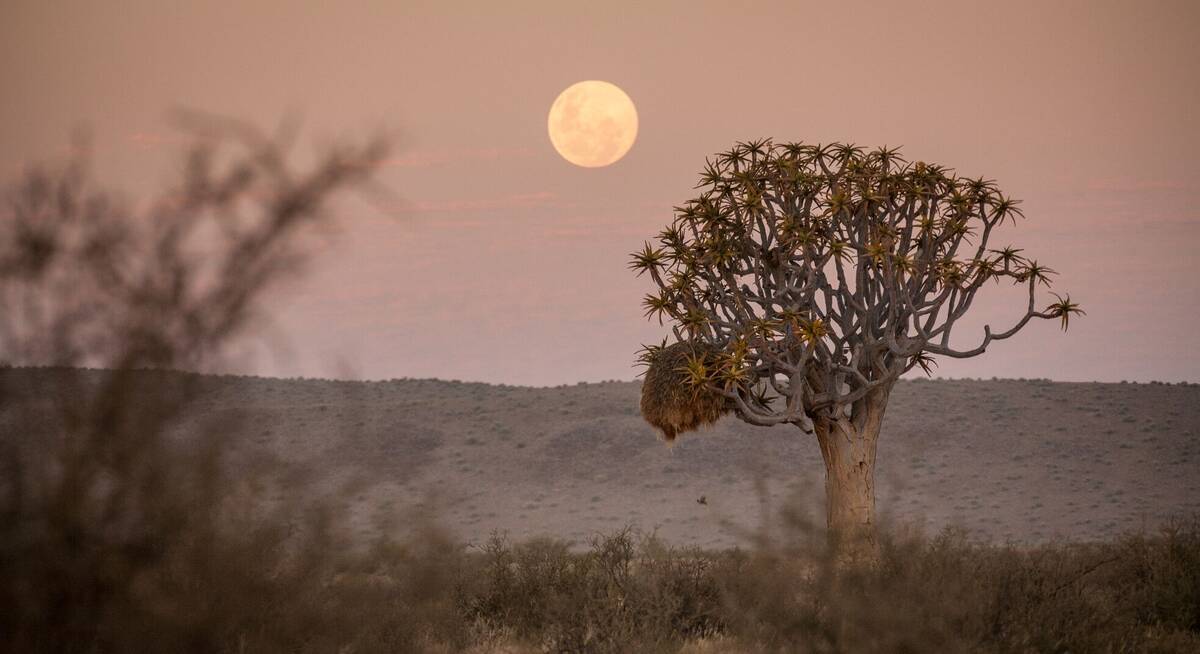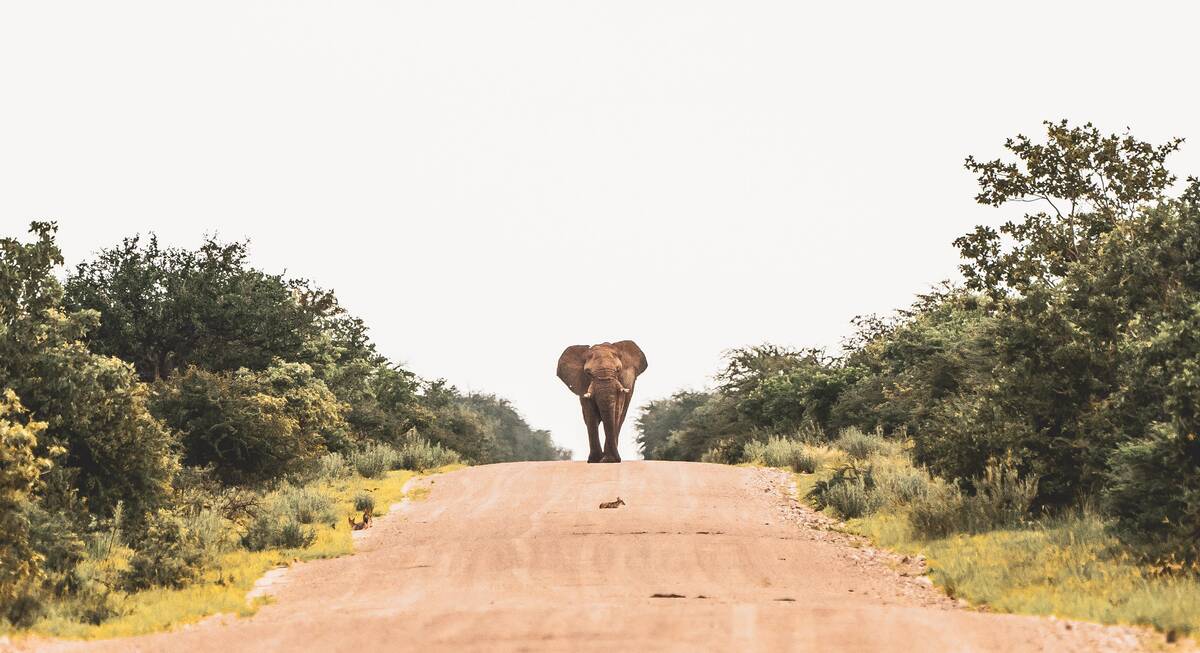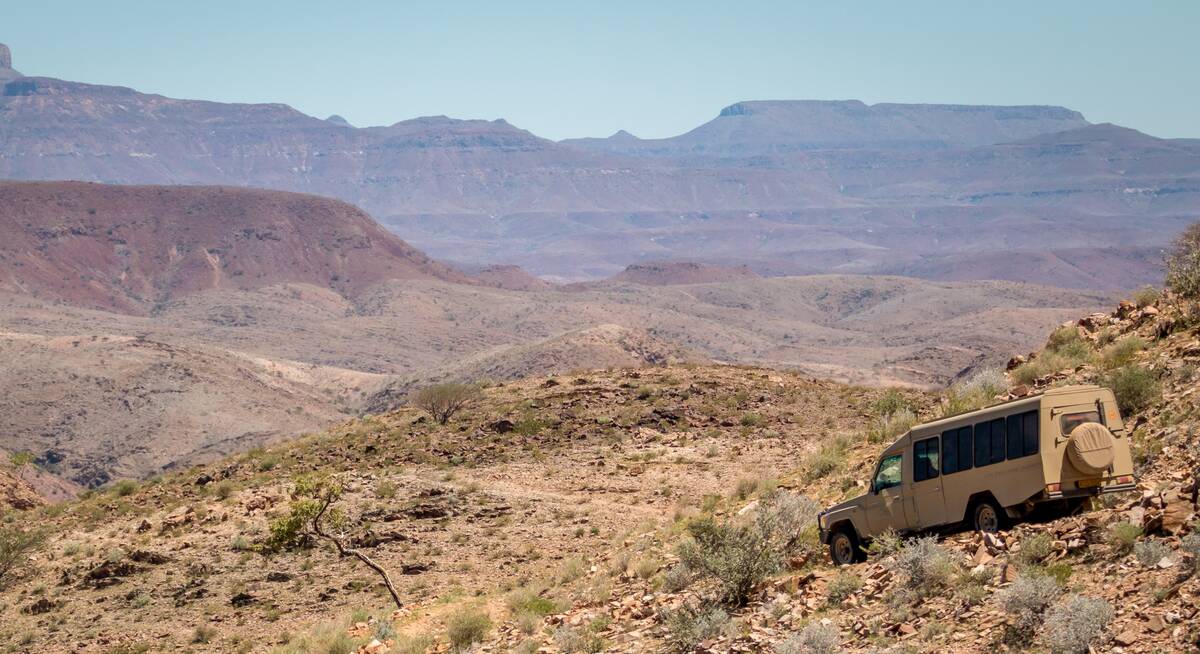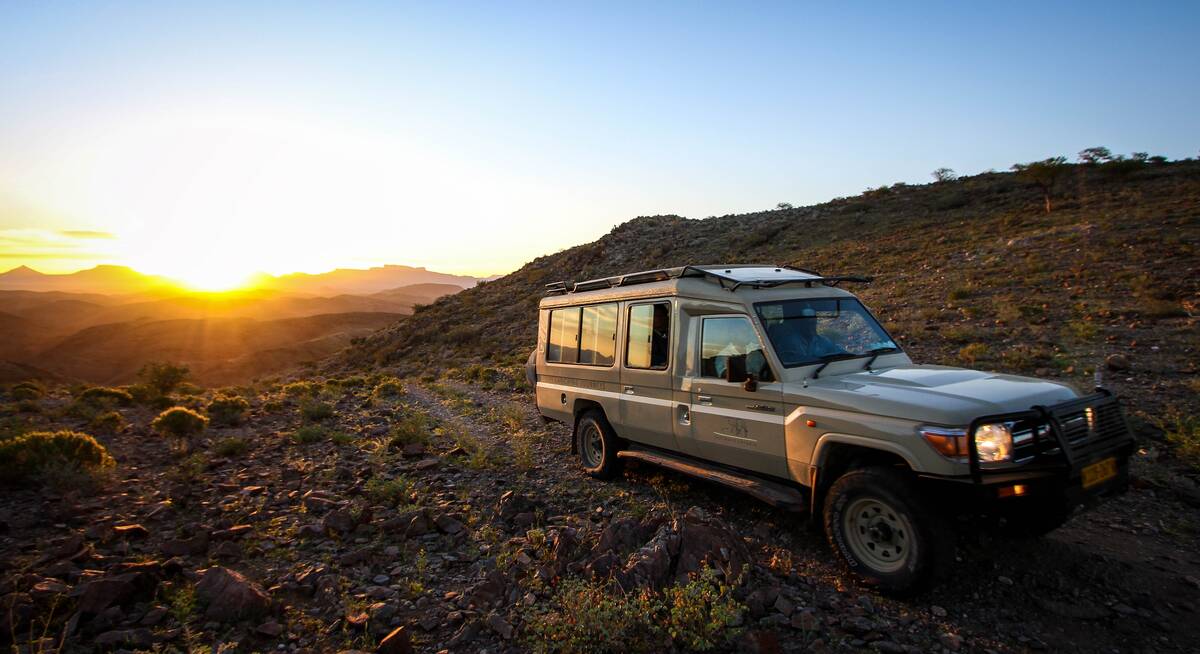Namibia is not a primate destination, but some species...
...including the chacma baboon, can be spotted in certain parts of the country.
Lesser bushbaby
Galago senegalensis Length (without tail) 17cm. Weight 150g.The lesser bushbaby is the most widespread and common member of a group of small and generally indistinguishable nocturnal primates, distantly related to the lemurs of Madagascar.
More often heard than seen, the lesser bushbaby is nocturnal but can sometimes be picked out by tracing a cry to a tree and shining a torch into the branches; its eyes reflect as two red dots. These eyes are designed to function in what we would describe as total darkness, and they feed on insects – some of which are caught in the air by jumping – and also eating sap from trees, especially acacia gum.
They inhabit wooded areas, and prefer acacia trees or riverine forests. I remember being startled whilst lighting a braai at Halali Camp, in Etosha, by a small family of bushbabies. They raced through the trees above us, bouncing from branch to branch whilst chattering and screaming out of all proportion to their size.
In Namibia they occur throughout the north, from northern Kaokoland and Etosha to Khaudum and the Caprivi Strip.
Our top picks for holidays to Namibia
We'll always tailor-make your Town for you. Here are some of our favourites to inspire you.

